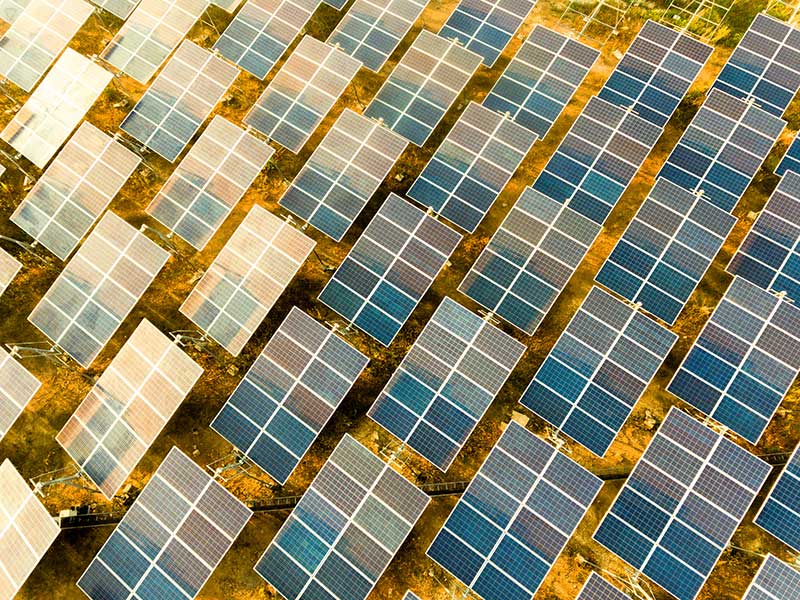In the absence of standardised reporting and regulatory frameworks for measuring and reducing carbon emissions resulting from large data centre operations, Australian sovereign cloud provider Vault Cloud has developed its own.
The company has declared that its cloud operations – its electricity-intensive data centre operations – have now achieved net zero status after spending three years developing and implementing a strategy for reducing emissions.
Vault Cloud chief executive Rupert Taylor-Price says the company’s data centres use 100 per cent renewable energy, and that it has invested heavily in solar and wind energy sources to achieve this.
The company has now released the strategic thinking, financial frameworks and ongoing administrative structures that underpin its net zero achievement as a case study for others.
Data centres are notoriously heavy users of electricity, and fast growing. This makes cloud services an emissions headache.

The absence of frameworks for accounting for emissions on the one hand and reducing or abating those emissions on the other has meant the broader industry been waiting for government regulation. And so, industry-wide not a lot of progress has been made.
“The Albanese governments obviously very strict on this stuff at the political level,” Mr Taylor-Price says. “But then when it drops down into the bureaucracy, there’s no standards to follow.
“There are no expectations to set, there is no reporting, there’s no structure,” he said. “And so, it has actually been quite a journey [for Vault Cloud to get to net zero].”
Vault has used the Greenhouse Gas Protocol that categorises a company’s emissions into three ‘scopes’ as the basis for a net zero strategy. Scope one covers emissions that come directly from a company’s own sources – generators, vehicles etc – while scope two accounts for GHG emissions from the generation of electricity consumed by the company.
Scope three emissions occur in the value chain of a company, including both upstream or downstream emissions.
On scope one and two, Vault says it has now at net zero emissions. On scope one, the company has removed all direct emissions from the business either by ceasing the activity or through electrification.
On scope two, the company has continued to make its data centres more efficient. But its other primary focus has been investment in renewables. The investment mechanism is designed to fully replace the amount of energy from emissions-intensive sources with newly created renewable energy capacity.
The company is collaborating with Telstra Energy to enter long-term power purchasing agreements (PPAs) that provide the financial underpinnings of large-scale, $200 million solar and wind farm initiatives that are underway in central New South Wales.
So, in the short term, the company is purchasing renewable energy from existing generators.
But it is also using the Power Purchasing Agreements either directly or through consortiums to give renewable energy producers with long-term, contractual income certainty, thus enabling them to more easily raise capital.
The ambition is that this can result in renewable energy capacity that would not otherwise have existed.
The energy provided through the PPAs does not generally align perfectly with Vault Cloud’s energy needs (for many reasons, including whether the sun is shining, or the wind is blowing.
To address the gap, Vault can sell excess capacity back to the grid through Large-scale generation certificates (LGCs) – which are regulated by the Australian Clean Energy Regulator – and if Vault requires more energy than the PPA can provide, it buys LGCs from regulated providers (that is, regulated by the Australian Clean Energy Regulator).

Mr Taylor-Price has been working with Telstra because it has the same issue as Vault as a large consumer of data centre electricity – albeit a larger scale. With contracts running to 25 years, the PPAs commit a Vault or a Telstra to purchasing a guaranteed amount of energy with an organisation.
“Those organisations then take that commitment from Telstra and from us, and they go to the bank, and say, ‘we are going to build this wind farm by borrowing, say $200 million,” Mr Taylor-Price said.
“But the asset they are borrowing off is the PPA from Vault and Telstra. We’re not actually building a wind farm ourselves, but our commitment to green energy results in the bank financing that wind farm,” he said.
“That is a wind farm that will exist that otherwise wouldn’t have [been built]. So, we feel like it’s a genuine step forward. But we’re obviously not an energy company.”
Mr Taylor-Price said the process to reach net zero had started in 2019. The company started looking at carbon offset scheme, but were turned off when understanding the certification, even in Australia, about how much carbon is genuinely being avoided.
So, it turned its attention to renewable energy. It is a complex process. But if your energy generator can tell you how much of your supply comes from emissions-intensive generation, and how much from renewables, then you have a starting point to word toward.
“Okay, if they tell you it’s 70 per cent carbon intensive and 30 per cent renewables, then that 70 per cent is the problem,” Mr Taylor-Price said. “Then we go to … a renewable energy generator, and we say, we want you to pump an extra megawatt-hour [or whatever the number is] into the grid to offset the carbon intense energy that [Vault] consumed.
“So, then someone else consumes our renewable energy that otherwise would have consumed carbon intensive energy. It is a very expensive way of doing it. But it was the only way we can categorically prove that we’re not emitting any carbon,” he said.
Getting approval from the Vault Cloud board was not straight-forward. Electricity is a large input cost for the company, and the methodology used to reach net zero has increased that input cost by between 20 per cent and 40 per cent.
Getting the company’s investors on board was also not straight-forward. Higher input costs means lower returns to investors is the hot-take. But ultimately the rationale that brought the board and investors into the tent was one of risk mitigation.
Regulation is almost certainly coming, even if it may be several years away, Mr Taylor-Price said, suggesting the company wanted get out in front of it.
“It takes a risk of us suddenly not being palatable to government out,” he said. “And then even if regulation comes in, I think it will be a few years away.
“And we will have a track record of having been compliant and already being at net zero and doing the right thing.”
Do you know more? Contact James Riley via Email.

